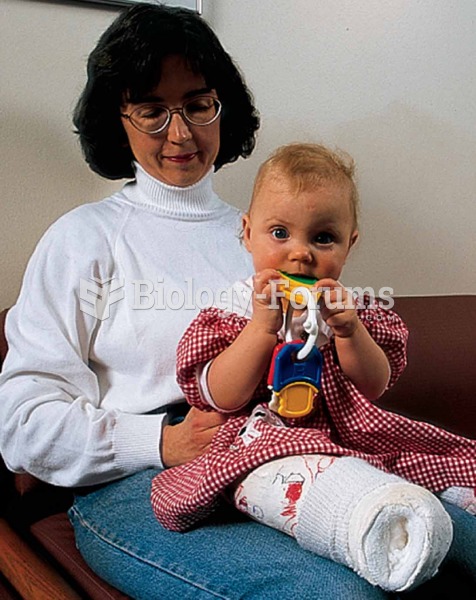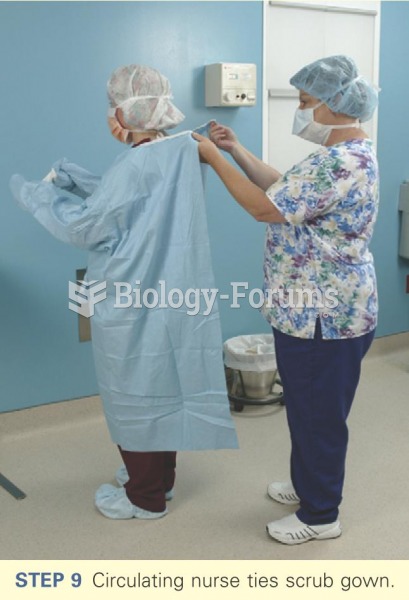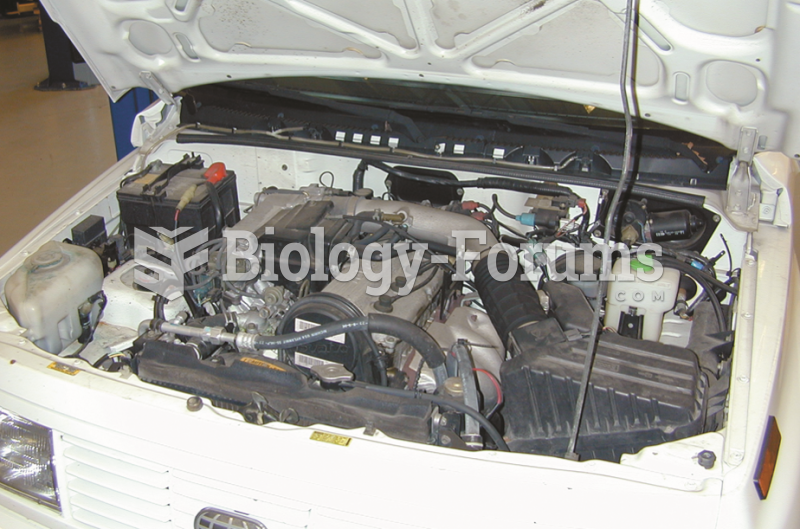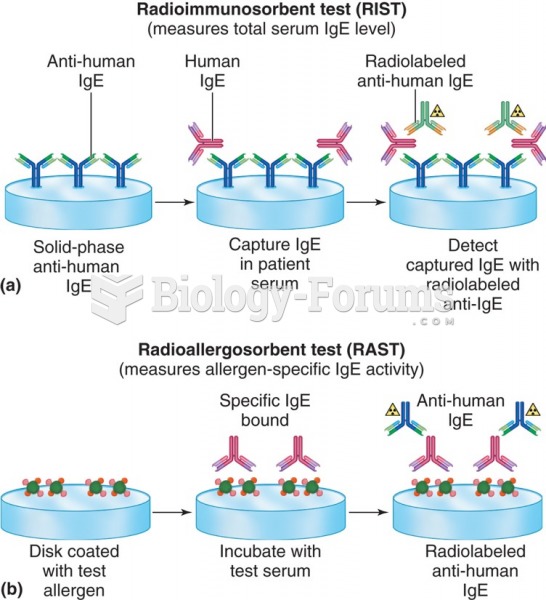|
|
|
Most childhood vaccines are 90–99% effective in preventing disease. Side effects are rarely serious.
The senior population grows every year. Seniors older than 65 years of age now comprise more than 13% of the total population. However, women outlive men. In the 85-and-over age group, there are only 45 men to every 100 women.
The Centers for Disease Control and Prevention has released reports detailing the deaths of infants (younger than 1 year of age) who died after being given cold and cough medications. This underscores the importance of educating parents that children younger than 2 years of age should never be given over-the-counter cold and cough medications without consulting their physicians.
As many as 28% of hospitalized patients requiring mechanical ventilators to help them breathe (for more than 48 hours) will develop ventilator-associated pneumonia. Current therapy involves intravenous antibiotics, but new antibiotics that can be inhaled (and more directly treat the infection) are being developed.
In 1844, Charles Goodyear obtained the first patent for a rubber condom.
 An example of color blindness test. A person with red-green color blindness would not be able to dis
An example of color blindness test. A person with red-green color blindness would not be able to dis
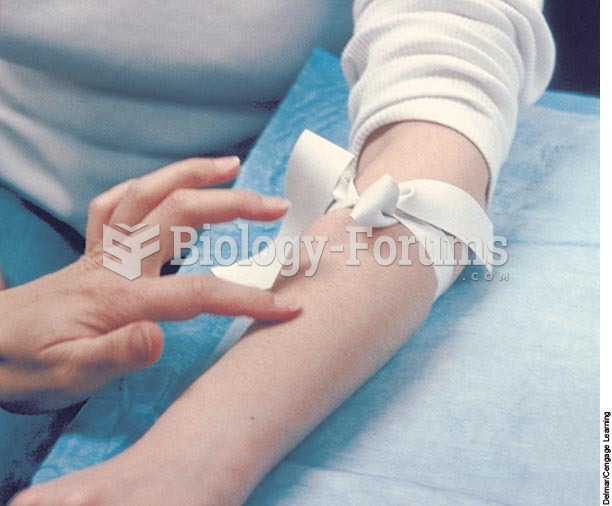 Inspect the site for potential veins to use and palpate to further locate a vein and test the firmne
Inspect the site for potential veins to use and palpate to further locate a vein and test the firmne


